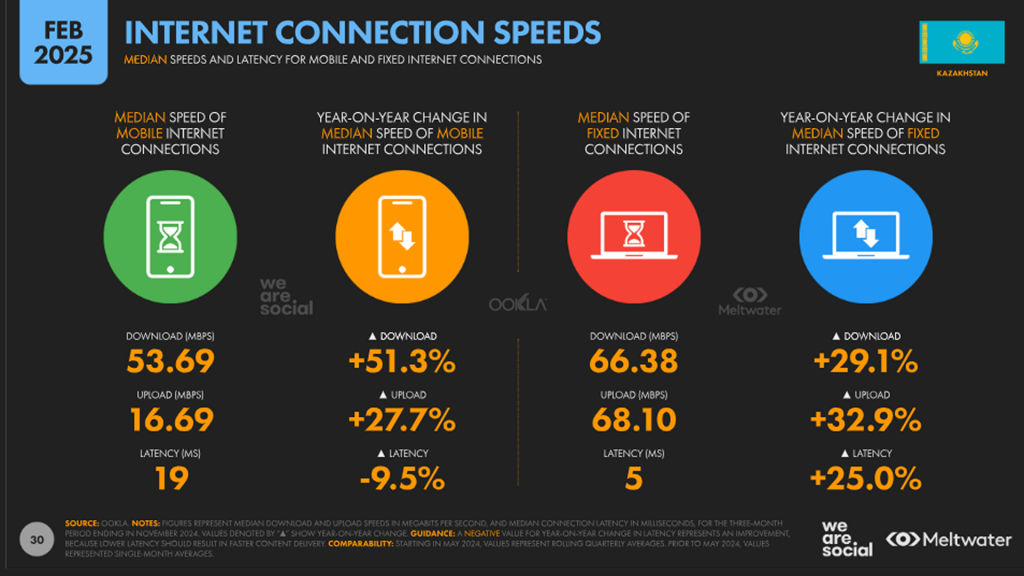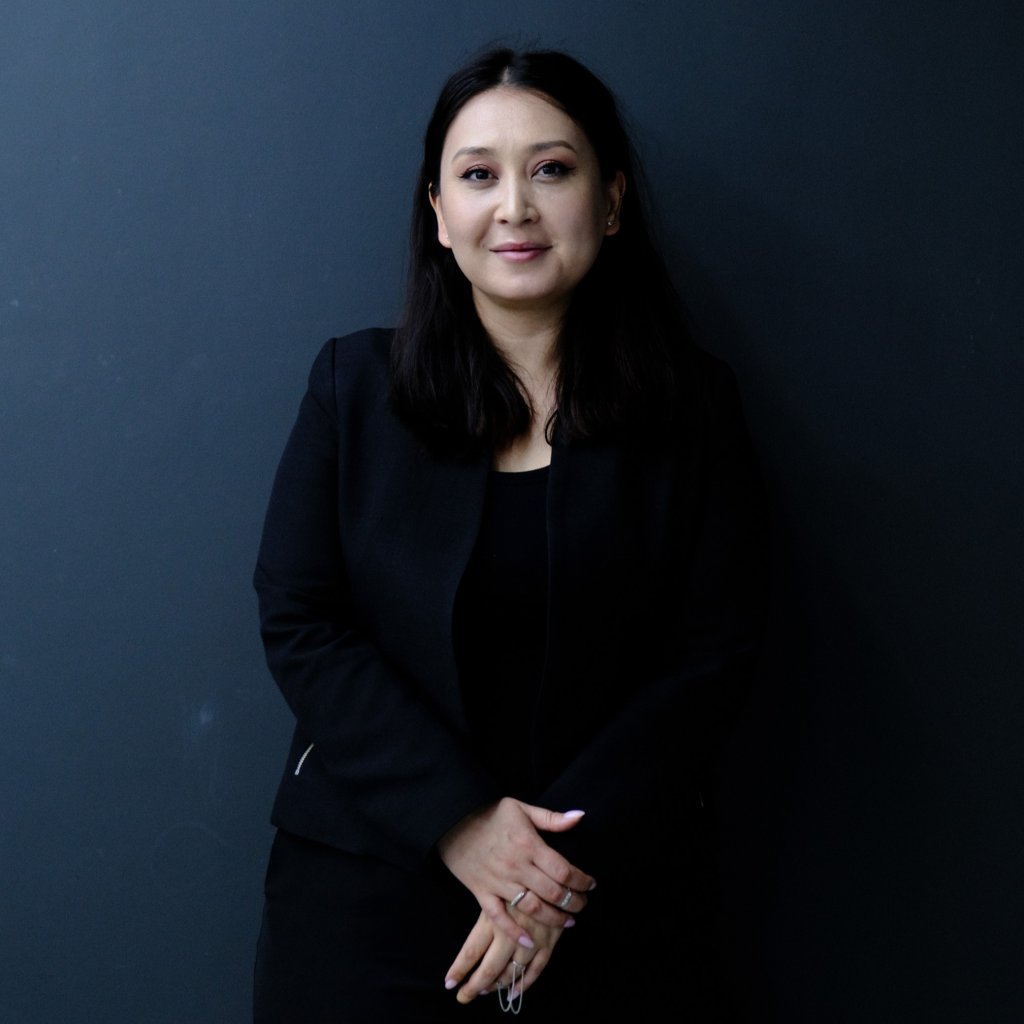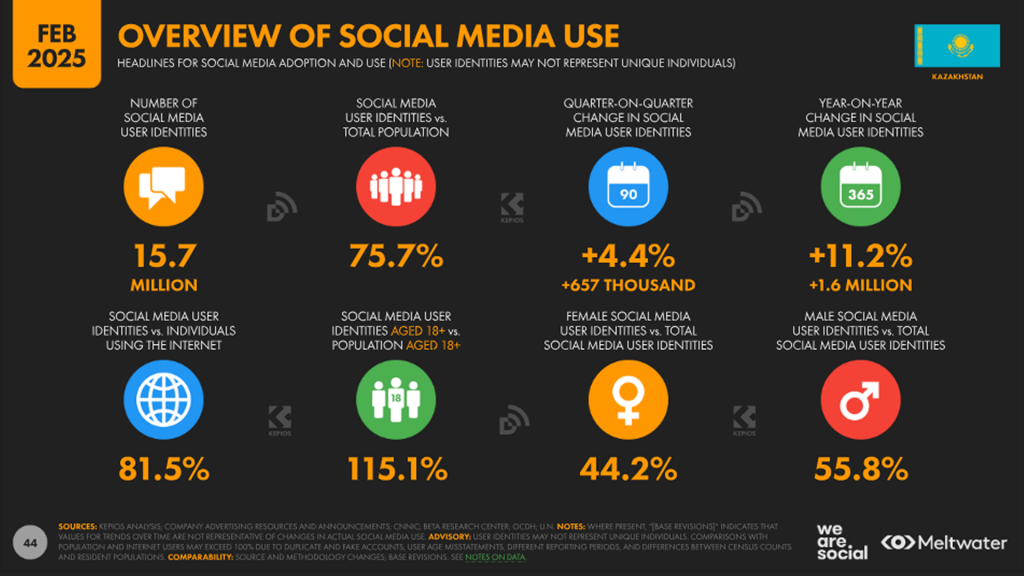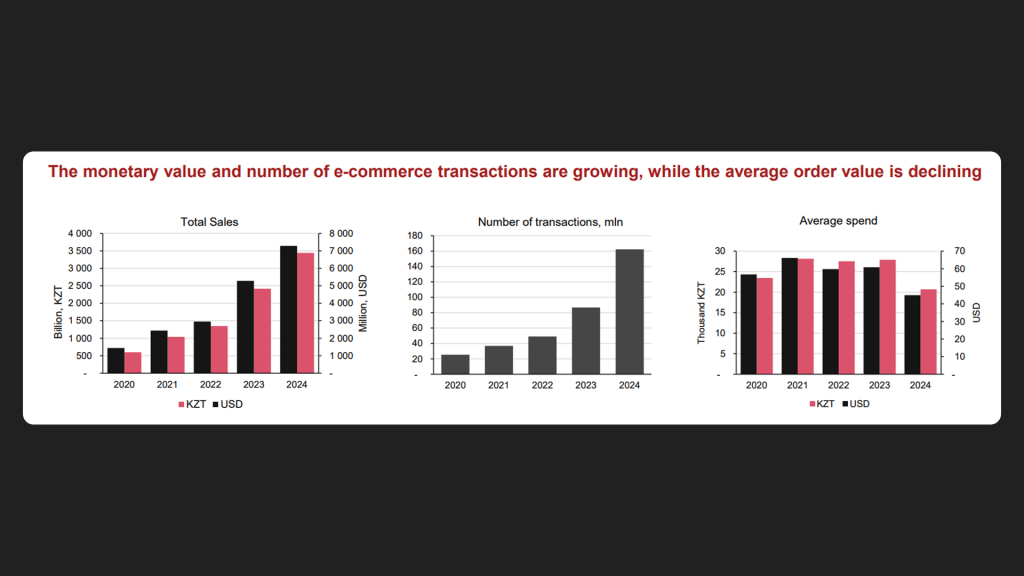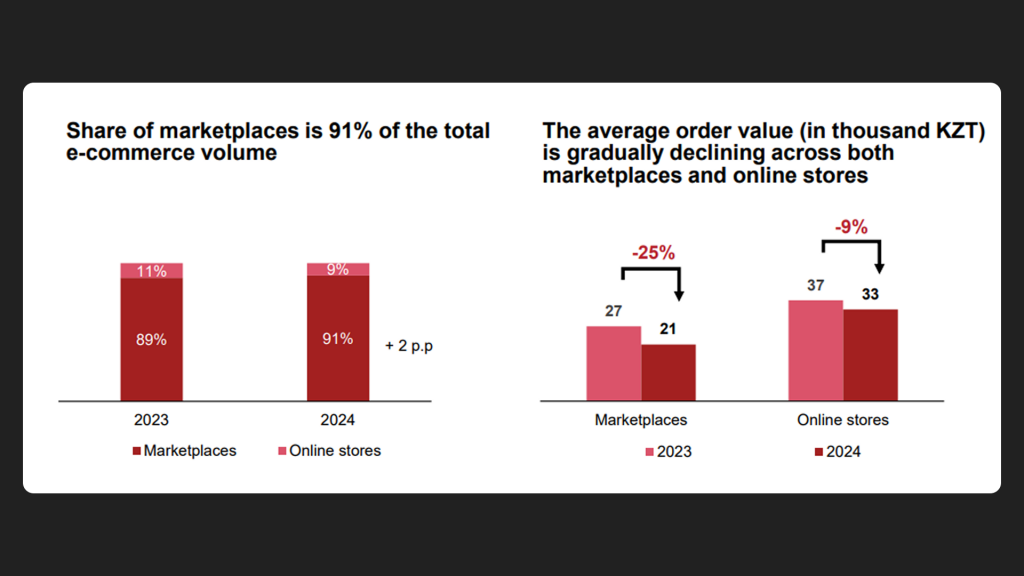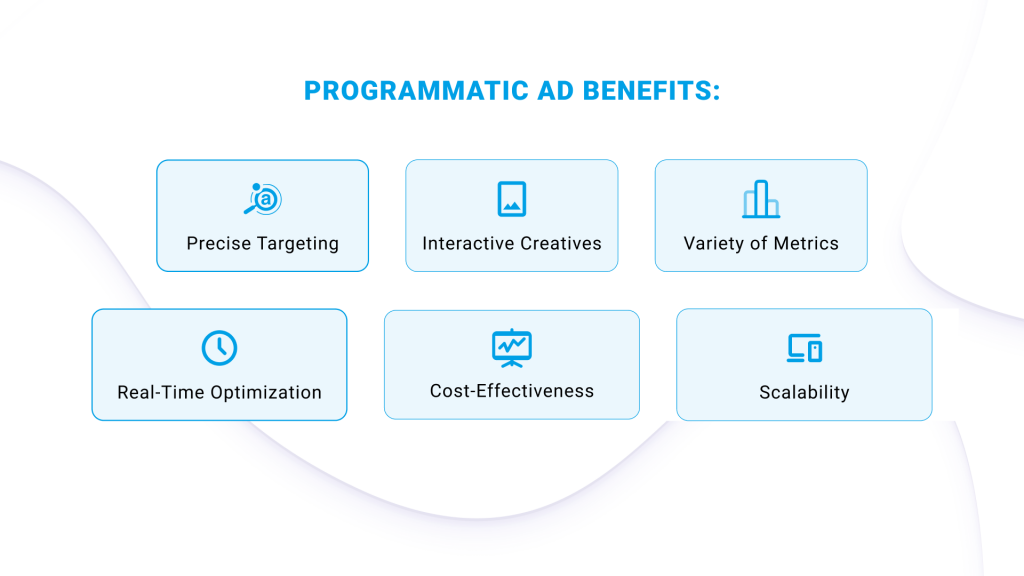What Awaits Digital Marketing in Kazakhstan in 2025
Digital marketing in Kazakhstan continues its active development in 2025, driven by the growth of the online audience and increased investment in digital tools.
According to DataReportal, as of early 2025, there were 19.2 million internet users in Kazakhstan, accounting for 92.9% of the country’s population. This indicates a high level of digital engagement.
Digital marketing in Kazakhstan provides a favorable environment for online brand promotion and active use of mobile advertising, programmatic, social media, and other channels.
In this article, we explore the key trends in the digital market, the evolution of programmatic, and share expert opinions from BYYD, Vostok Group, DASM Group, MCA CCAR, Okori Kazakhstan, and Initiative Media Kazakhstan.
What’s Driving the Growth of Digital Marketing in Kazakhstan
Expanding Digital Consumption
In 2024, Kazakhstan’s National Bureau of Statistics conducted a study showing a high level of digital engagement. Over 96% of the population uses the internet, and more than 92% demonstrate strong digital literacy.
From 2024 to 2025, the average mobile internet download speed in Kazakhstan increased by 51.3%.
This shows that digital consumption is reaching a new level. Broad internet accessibility creates a solid foundation for digital advertising campaigns.
Dilafruz Zhiyranova,
Digital Director at Vostok Group:
In the first six months of 2025, Kazakhstan’s total advertising market grew by 17% and reached 27 billion KZT. Digital continues to be the fastest-growing segment. Internet advertising generated nearly 14 billion KZT (+29% compared to 2024)—and that’s only for the first half of the year. The reasons are clear: automation, personalization, and measurability make digital highly attractive for brands.
Social Media Becomes the Primary Communication Channel
In January 2025, Kazakhstan had 15.7 million active social media users—75.7% of the total population. This figure grew by 11.2% over the past year.
This shows that social media has become one of the main communication channels and a powerful tool for digital marketing.
High engagement levels reflect a mature digital market and users’ readiness to interact actively with brands online — from viewing ads to shopping.
A Thriving E-Commerce Ecosystem
According to a PwC report, Kazakhstan’s retail e-commerce market shows consistent and positive growth. In 2024, total sales reached 3.439 trillion KZT (+42% YoY), equal to USD 6.5 billion.
Consumer activity also saw a significant rise. The number of transactions reached 162 million—an 87% increase year over year.
E-commerce accounted for 15.3% of total retail trade, exceeding the global average of 7.7%.
A notable trend is the increase in transaction numbers alongside a decrease in average order value. Consumers are shopping more frequently but spending less per order—a behavior typical of mature markets and a sign of online commerce becoming a daily habit.
Anton Ayrikh,
Digital director at Initiative Media Kazakhstan:
E-commerce is growing, especially among large platforms, but strong cases are also emerging in niche projects. Growth relies on three factors: a deep understanding of your audience, quick feedback, and clear unit economics. The market has become tougher — but also more transparent. The winners are those who test and analyze instead of rushing.
Marketplaces remain the central hubs of consumer demand. As competition intensifies and consumer activity drops, sellers increasingly focus on price accessibility, logistics, and promo mechanics.
Marketplaces account for 91% of all e-commerce sales.
Dilafruz Zhiyranova,
Digital Director at Vostok Group:
Marketplaces have become the main sales channel, making up 84.9% of all online purchases. Kaspi.kz confidently leads the top three in Kazakhstan and is evolving into a full ecosystem—investing heavily in logistics, online supermarkets, and delivery services. As a result, advertisers are looking for new ways to reach their audiences. Here, I would especially highlight Retail Media—ads within marketplaces and e-commerce platforms. This segment is growing at record speed because the ads are highly relevant and directly drive purchases.
AI Replaces Clicks
Artificial intelligence makes search faster and more convenient, but for advertisers, it means a sharp decline in click-through rates and overall traffic.
Andrey Barabanshchikov,
Digital Director at MCA CCAR:
First, there is a general trend of declining click-through rates (CTR) in search results. For the top position, the drop is 34.5%, and for organic results, it can be as much as 70%. This is because AI tools like Gemini and Copilot provide answers directly at the top of the results page — and often, that answer is enough for the user. Second, the number of zero-click searches is growing. Around 60% of searches end without a single click to a website, as AI Overviews push ads off the screen. Third, overall search traffic is shrinking due to a shift toward AI chat interfaces. Gartner predicts a 25% drop in traffic by 2026. Until advertising finds its place in AI chats, brands need to double down on contextual advertising and accept a new competitor in the search results — artificial intelligence.
Youth and Urbanization
The average age of the population in Kazakhstan is 29.7 years. More than 58.5% of the population lives in cities.
This is a key factor for digital marketing, as young urban residents are the most active content consumers and frequent buyers online.
Kazakh-Language Content Consumption
60-65% of the audience chooses content in the Kazakh language. The trend is especially observed among young people.
Dilafruz Zhiyranova,
Digital Director at Vostok Group:
A prominent trend today is the rising popularity of Kazakh-language content. This is a game-changer: the local language is no longer a niche option—it’s becoming a must-have for anyone who wants to speak to their audience. In this context, I’d highlight the emergence of the BIRGE TV online cinema, which now offers 180,000 hours of Kazakh-language content. Platforms like Alma+ and Qazaqstan are dubbing popular movies and creating original content in Kazakh.
Digital Marketing in Kazakhstan: Expert Opinions about Trends
Renat Rakhmetov,
Managing Director at BYYD CA, APAC, Balkans:
Kazakhstan shows high mobile activity. Demand for mobile apps—especially in finance, e-commerce, and entertainment—is steadily growing. This lays strong ground for the development of programmatic advertising in the region. In 2025, interactive formats continue gaining momentum. Advertisers see that engaging banners are more appealing to users and help capture their attention for longer. Growth in this segment is also supported by advances in analytics, AI integration, and more behavioral data.
Nurmukhamed Ibraev,
Business Development Director at DASM Group:
First, I’d point out the strong growth in e-commerce, a trend that will continue year after year. Agencies and clients alike are expecting more analytics and deeper access to consumption data. Second, we’re seeing a shift toward ecosystem products—a fusion of banking, ticketing, travel, taxis, maps, groceries, and more. Once users enter such ecosystems, they’re unlikely to seek alternatives. These habits are shaping a new consumer culture. Third, Kazakhstan has always been a mobile-first country, and this trend is accelerating. That’s why brands and digital marketers should prioritize in-app communication. Fourth, we’re observing exciting changes in the further digitization of out-of-home advertising. Soon, digital and DOOH campaigns will be planned from a single interface.
Dilafruz Zhiyranova,
Digital Director at Vostok Group:
First, AI-generated creatives. Brands are actively using artificial intelligence to produce banners, videos, and texts. Second, automated campaigns. Algorithms now manage everything—from channel selection and targeting to creative generation, hypothesis testing, and budget reallocation. Third, AI-based behavior prediction. This improves both conversion rates and user loyalty. In 2024, we launched our proprietary DCO platform, LePont by Publicis, which adapts creatives based on users’ online behavior.
Andrey Barabanshchikov,
Digital Director at MCA CCAR:
First, the growth of advertising in messengers. Telegram now covers 60% of Kazakhstan’s population, and new ad formats — ranging from search-based to in-video ads — have launched over the past year. I’m sure most advertisers will want to experiment with it. Second, in-app promotion is expanding. A mobile-first approach is key to successful strategies. According to our data, more than 86% of ad traffic is mobile. Third, we’re seeing a shift from brand vs. performance to brandformance. SMBs are building brands, while large players are pushing performance boundaries. Strategies are now more integrated and require end-to-end analytics and research.
Denis Molostov,
Digital buying director Okori Kazakhstan (Partner of Dentsu):
A key trend is the OptiChannel approach in multichannel engagement strategies. It integrates traditional media (TV, radio, OOH) with digital tools into a single communication system, much like omnichannel strategies. This expands audience coverage and increases efficiency through precise segmentation. We’re also seeing the rise of AI platforms as search alternatives. Over 40% of U.S. users now get answers directly from AI systems. Kazakhstan is quickly following that trend. In parallel, demand for junior-level staff is decreasing—basic tasks like copywriting, analytics, and A/B testing are being handed over to AI. At Okori, we focus on AI Augmentation: minimizing routine tasks and strengthening the strategic role of senior-level specialists.
Anton Ayrikh,
Digital director at Initiative Media Kazakhstan:
Digital in 2025 has matured—but also become more complex. Reach is no longer enough; brands are building funnels, calculating unit economics, and demanding concrete results. You have to offer more than just targeting. Telegram has evolved into a full ecosystem: channels, bots, mini-apps—it’s now the core of digital mechanics, not just a supporting platform. TikTok keeps growing, driven by local infotainment and short-form content.
Programmatic Advertising in Kazakhstan
According to DataReportal, 56% of web traffic in Kazakhstan comes from mobile phones—confirming the power of mobile advertising.
In-app formats allow brands to reach users where they spend most of their time: in apps, on social platforms, and on mobile-optimized websites. This approach ensures high visibility, personalized engagement, and lasting attention.
Benefits of Programmatic In-App Advertising
- Precise targeting – Deliver ads to audiences based on specific interests and geolocations.
- Interactive creatives – Formats like Rich Media help drive higher engagement and boost ad effectiveness.
- Real-time optimization – Monitor campaign performance live and make instant adjustments.
- Cost efficiency – Programmatic reduces waste by showing ads only to relevant users.
- Scalability – Reach millions of users through mobile apps.
- Diverse metrics – Access a wide range of KPIs for in-depth campaign analysis and optimization.
Programmatic advertising in Kazakhstan has already become a major and fast-growing segment of the digital market. Its share in advertising budgets is expected to grow even further. This is an important trend shaping digital marketing in Kazakhstan in 2025.
To learn more about mobile advertising or to launch an in-app campaign:
- Submit a request on our website
- Email us at hello@byyd.me
